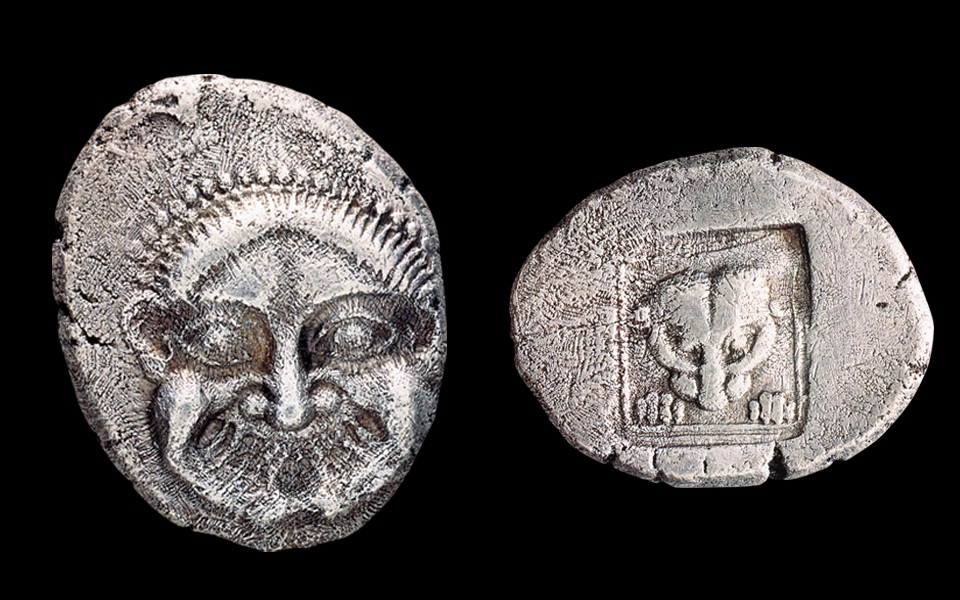
On the obverse is depicted the gorgon, while on the reverse the head of a lioness within a square frame. Most coins of this type were likely minted under the rule of Peisistratos. Served mainly local needs, rarely found outside Attica (Numismatic Museum, Athens).
© Νumistatic Museum, Athens © Hellenic Ministry of Culture, Education and Religious Affairs/Archaeological Receipts Fund
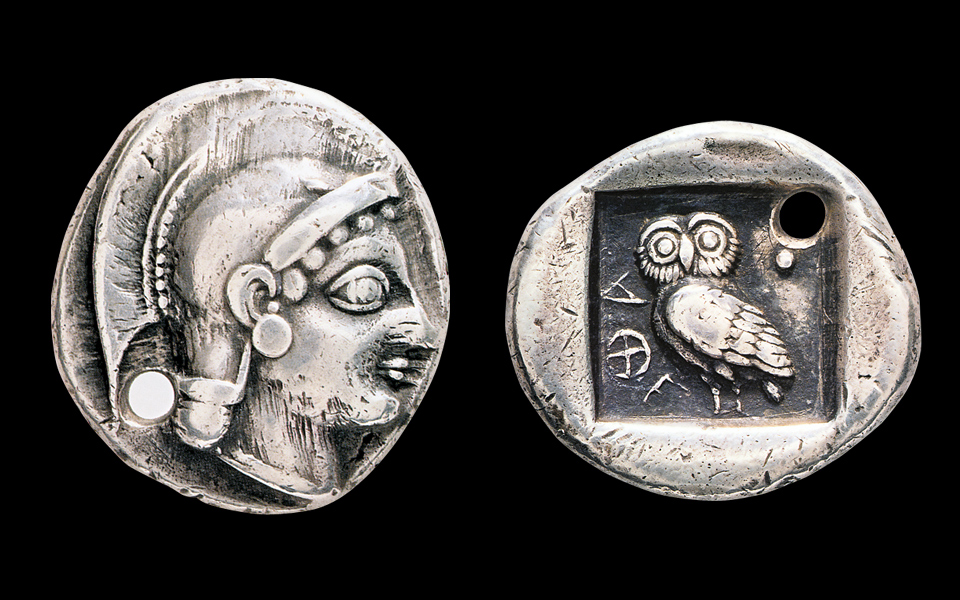
On the obverse is the head of Athena. On the reverse, the owl (glaux), sacred to the goddess. The “Glaux” coin type began appearing in Athenian coinage under the rule of Hippias, son of Peisistratos, and inspired confidence by remaining unchanged for many years; thus, these coins circulated in many foreign market places (Numismatic Museum, Athens).
© Νumistatic Museum, Athens © Hellenic Ministry of Culture, Education and Religious Affairs/Archaeological Receipts Fund

On the obverse, the head of Athena, with eyes that resemble those of an owl, recalling “Athena Glaukopis” (Bright-Eyed Athena) of Homer’s epics Silver Athenian tetradrachm, ca. 500 BC. On the reverse appears the owl.(Numismatic Museum, Athens).
© Νumistatic Museum, Athens © Hellenic Ministry of Culture, Education and Religious Affairs/Archaeological Receipts Fund
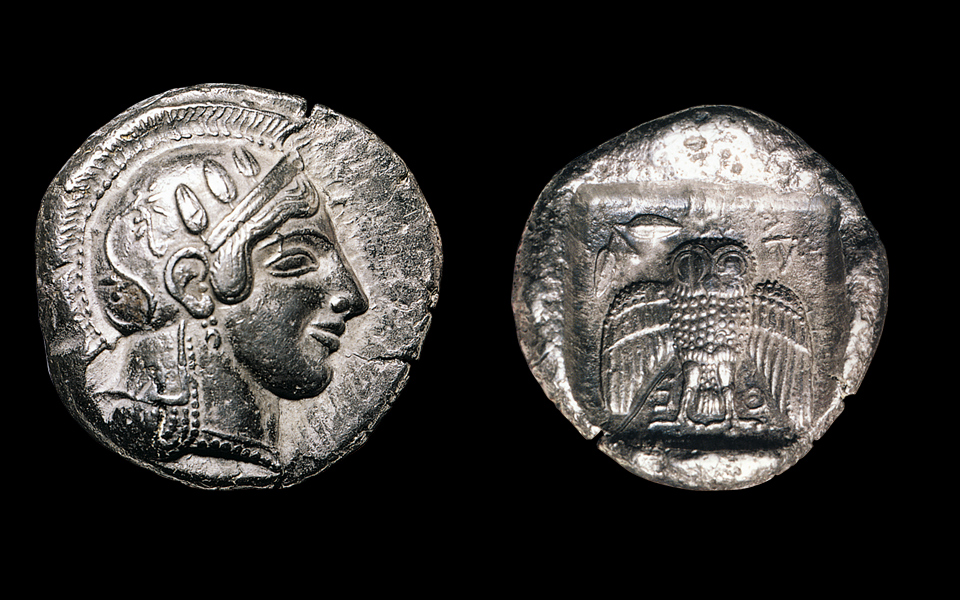
On the obverse appears the head of Athena, wearing an Attic helmet decorated with olive leaves. On the reverse is an owl with open wings, reflecting the tradition that Athenian fighters saw such a bird hovering over their heads during the Battle of Marathon. The coin shown here is actually a souvenir from the Battle of the Eurymedon (ca. 467 BC, State Museum – Numismatic Collection, Berlin).
© Νumistatic Museum, Athens © Hellenic Ministry of Culture, Education and Religious Affairs/Archaeological Receipts Fund
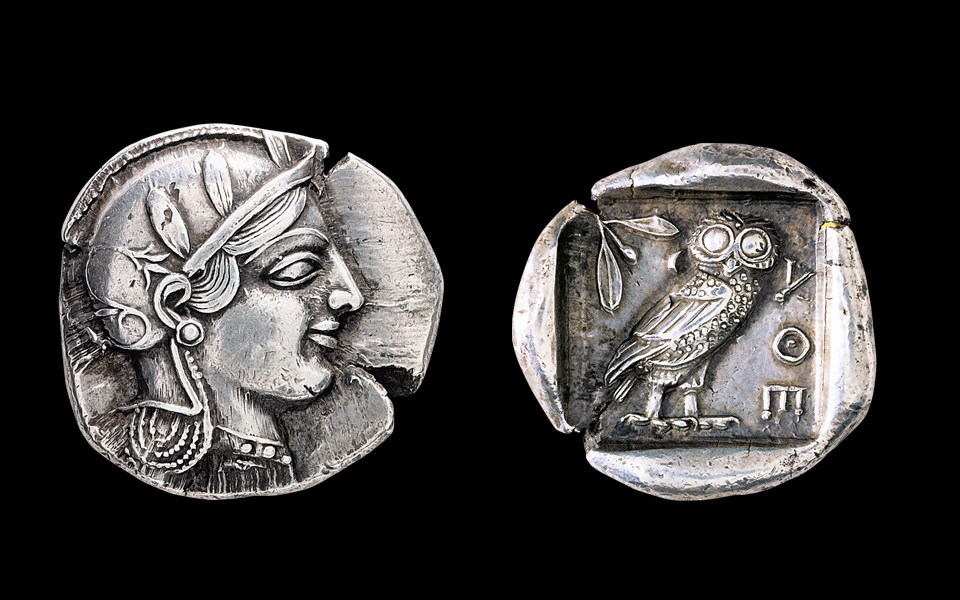
On the obverse is the head of Athena surrounded with olive leaves, a symbol of victory against the Persians; on the reverse, an owl (Numismatic Museum, Athens).
© Νumistatic Museum, Athens © Hellenic Ministry of Culture, Education and Religious Affairs/Archaeological Receipts Fund
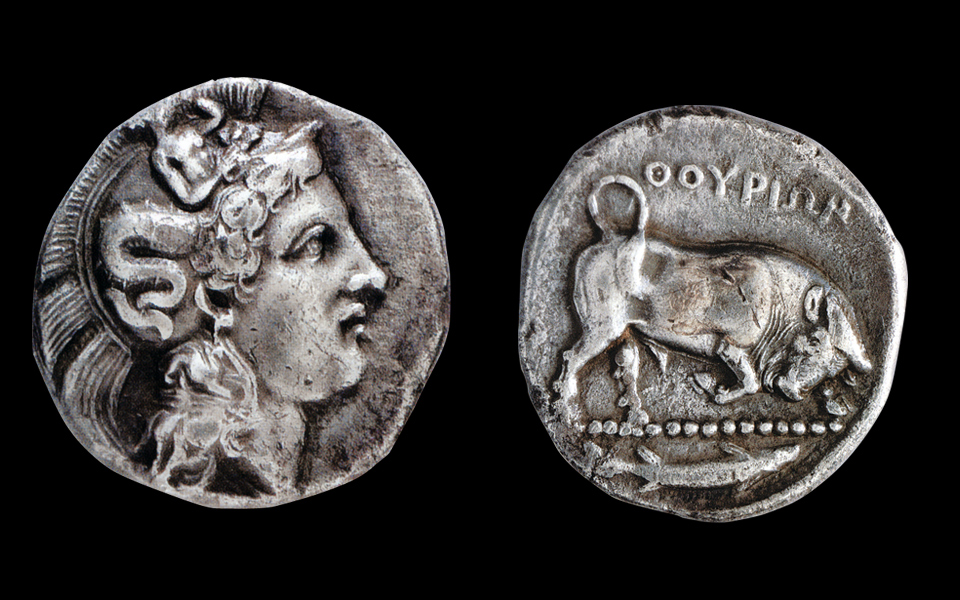
On the obverse appears Athena; on the reverse, a bull ready to charge (Numismatic Museum, Athens).
© Νumistatic Museum, Athens © Hellenic Ministry of Culture, Education and Religious Affairs/Archaeological Receipts Fund
Edward Harris | October 9th, 2015
EDWARD HARRIS is Emeritus Professor of Ancient History at Durham University. He is author of “The Rule of Law in Action in Democratic Athens” (Oxford, 2013) and co-editor of “The Ancient Greek Economy: Markets, Households and City-States” (Cambridge, 2015).
He teaches at College Year in Athens.

On the obverse is depicted the gorgon, while on the reverse the head of a lioness within a square frame. Most coins of this type were likely minted under the rule of Peisistratos. Served mainly local needs, rarely found outside Attica (Numismatic Museum, Athens).
© Νumistatic Museum, Athens © Hellenic Ministry of Culture, Education and Religious Affairs/Archaeological Receipts Fund

On the obverse is the head of Athena. On the reverse, the owl (glaux), sacred to the goddess. The “Glaux” coin type began appearing in Athenian coinage under the rule of Hippias, son of Peisistratos, and inspired confidence by remaining unchanged for many years; thus, these coins circulated in many foreign market places (Numismatic Museum, Athens).
© Νumistatic Museum, Athens © Hellenic Ministry of Culture, Education and Religious Affairs/Archaeological Receipts Fund

On the obverse, the head of Athena, with eyes that resemble those of an owl, recalling “Athena Glaukopis” (Bright-Eyed Athena) of Homer’s epics Silver Athenian tetradrachm, ca. 500 BC. On the reverse appears the owl.(Numismatic Museum, Athens).
© Νumistatic Museum, Athens © Hellenic Ministry of Culture, Education and Religious Affairs/Archaeological Receipts Fund

On the obverse appears the head of Athena, wearing an Attic helmet decorated with olive leaves. On the reverse is an owl with open wings, reflecting the tradition that Athenian fighters saw such a bird hovering over their heads during the Battle of Marathon. The coin shown here is actually a souvenir from the Battle of the Eurymedon (ca. 467 BC, State Museum – Numismatic Collection, Berlin).
© Νumistatic Museum, Athens © Hellenic Ministry of Culture, Education and Religious Affairs/Archaeological Receipts Fund

On the obverse is the head of Athena surrounded with olive leaves, a symbol of victory against the Persians; on the reverse, an owl (Numismatic Museum, Athens).
© Νumistatic Museum, Athens © Hellenic Ministry of Culture, Education and Religious Affairs/Archaeological Receipts Fund

On the obverse appears Athena; on the reverse, a bull ready to charge (Numismatic Museum, Athens).
© Νumistatic Museum, Athens © Hellenic Ministry of Culture, Education and Religious Affairs/Archaeological Receipts Fund
Despite a history of thousands of years, modern Greek winemakers...
Go to Top

More Information
Sign Up for Premium Content, Special Offers & More.